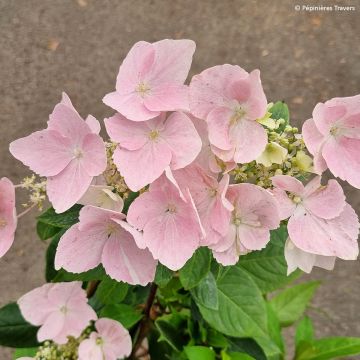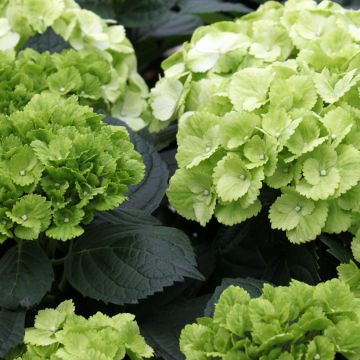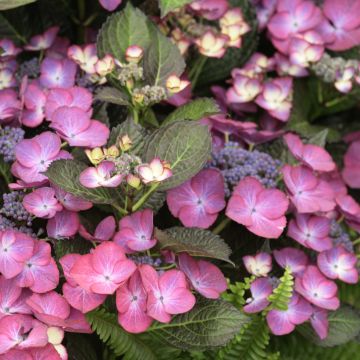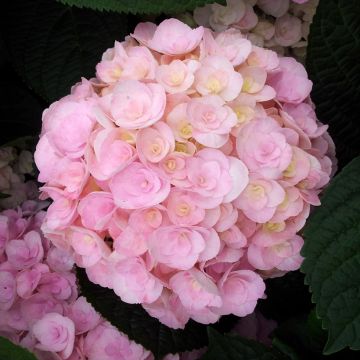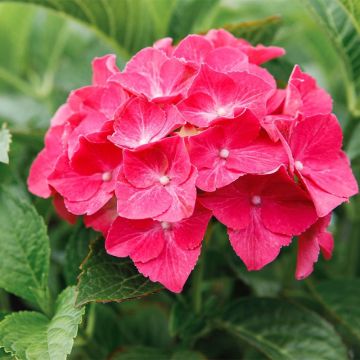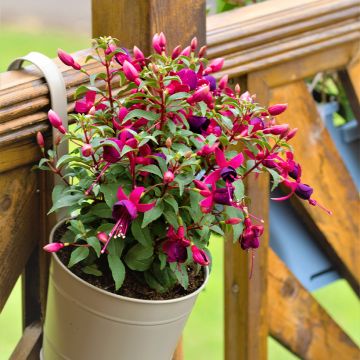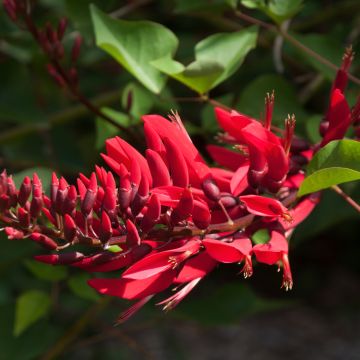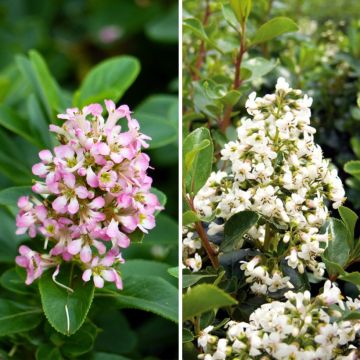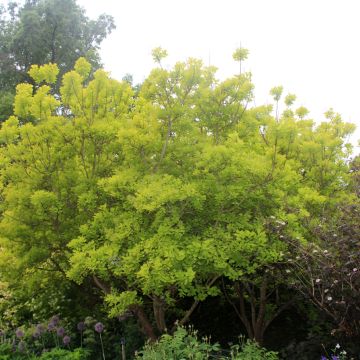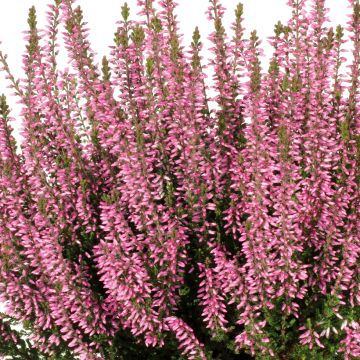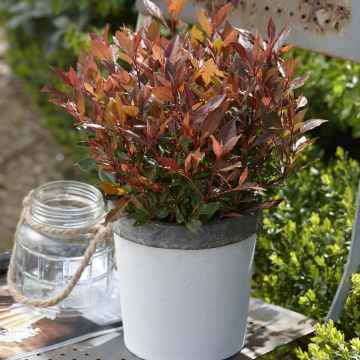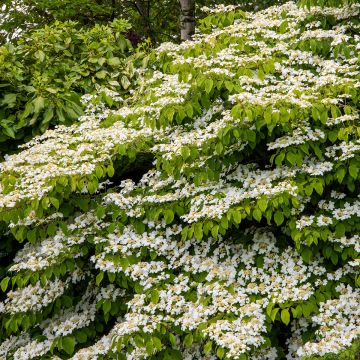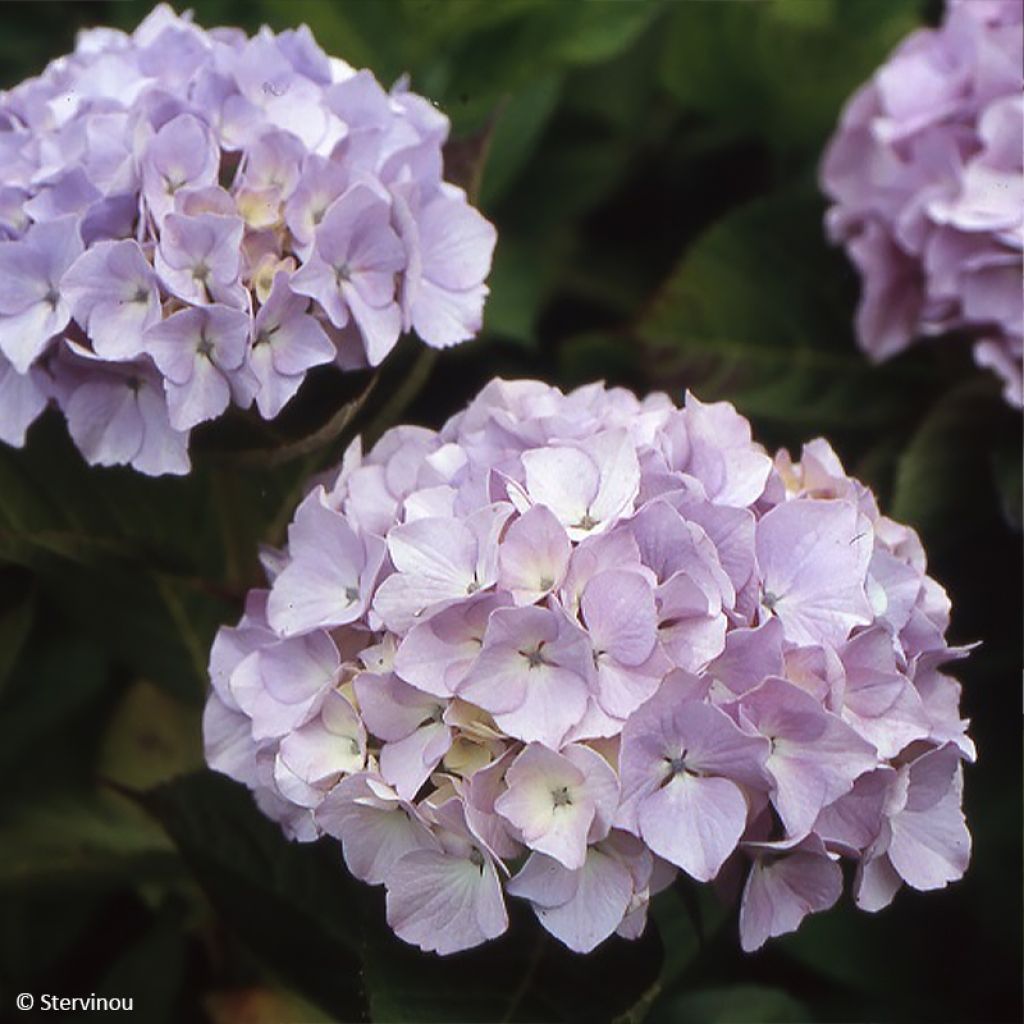

Hortensia Madame Plumecoq Collection 1900 - Hydrangea macrophylla
Hydrangea macrophylla Madame Plumecoq
Hydrangea macrophylla Madame Plumecoq
Bigleaf Hydrangea, French Hydrangea
Special offer!
Receive a €20 voucher for any order over €90 (excluding delivery costs, credit notes, and plastic-free options)!
1- Add your favorite plants to your cart.
2- Once you have reached €90, confirm your order (you can even choose the delivery date!).
3- As soon as your order is shipped, you will receive an email containing your voucher code, valid for 3 months (90 days).
Your voucher is unique and can only be used once, for any order with a minimum value of €20, excluding delivery costs.
Can be combined with other current offers, non-divisible and non-refundable.
Home or relay delivery (depending on size and destination)
Schedule delivery date,
and select date in basket
This plant carries a 24 months recovery warranty
More information
We guarantee the quality of our plants for a full growing cycle, and will replace at our expense any plant that fails to recover under normal climatic and planting conditions.
Would this plant suit my garden?
Set up your Plantfit profile →
Description
Hydrangea macrophylla 'Madame Plumecoq' (1900 collection) is a classic variety of big-leaf hydrangea that wonderfully expresses the old-fashioned charm of the Belle Époque. Renowned for its flowering and vigour, this opulent bush is adorned with pom-poms of a delicate pink with apricot nuances that gradually turn to cream. As they fade, the flowers fade into green tones, sometimes sprinkled with red. In autumn, the foliage takes on bronze shades. Superb in a romantic garden, its flowers also make dry or fresh bouquets for the house.
'Madame Plumecoq' is derived from Hydrangea macrophylla. All hydrangeas belong to the Hydrangeaceae family, and are native to China and Japan.
'Madame Plumecoq' has a rounded and wide habit. It will reach about 1.2m (4ft) in height with a spread of 1.4m (5ft) by the age of 10 years. Its strong branches easily support the weight of the flowers. The flowering of this variety begins in early August and continues until October. It is particularly abundant, produced by one-year-old branches. The spherical inflorescences reach 10cm (4in) in diameter, and are composed of many sterile flowers tightly packed together. The pH of the soil slightly influences their colours: a very acidic soil can give flowers a slightly mauve pink. The deciduous foliage is bright green and slightly glossy. At the end of the season, it turns to yellow and bronze before falling. The leaves are opposite, and reach a minimum of 15cm (6in) in length. They are single, elliptical, ending in a tapered point, and are roughly dentate. Hydrangeas can live for at least 50 years. This variety resists frosts down to -12°C (10.4°F).
'Madame Plumecoq', a classic of flower beds and romantic bouquets, is a generous plant, which will make a great impact in the ground as well as in a container on a terrace or balcony. Withstanding sea spray well, it is ideal in a wet coastal garden. Hydrangeas are well known for brightening the north side of houses. This one will enjoy an east or west exposure that is not burning, in beds and hedges. Even though they fear limestone, hydrangeas are not strictly acid soil plants; they like rich and humiferous soils. Plant them with magellanica fuchsias, pieris, annual impatiens, or lilies, or plant spring-flowering bulbs and Omphalodes verna in front of their round silhouette. Enjoy their sumptuous flowering in the garden or in the house for a long time.
Report an error about the product description
Hydrangea macrophylla Madame Plumecoq in pictures
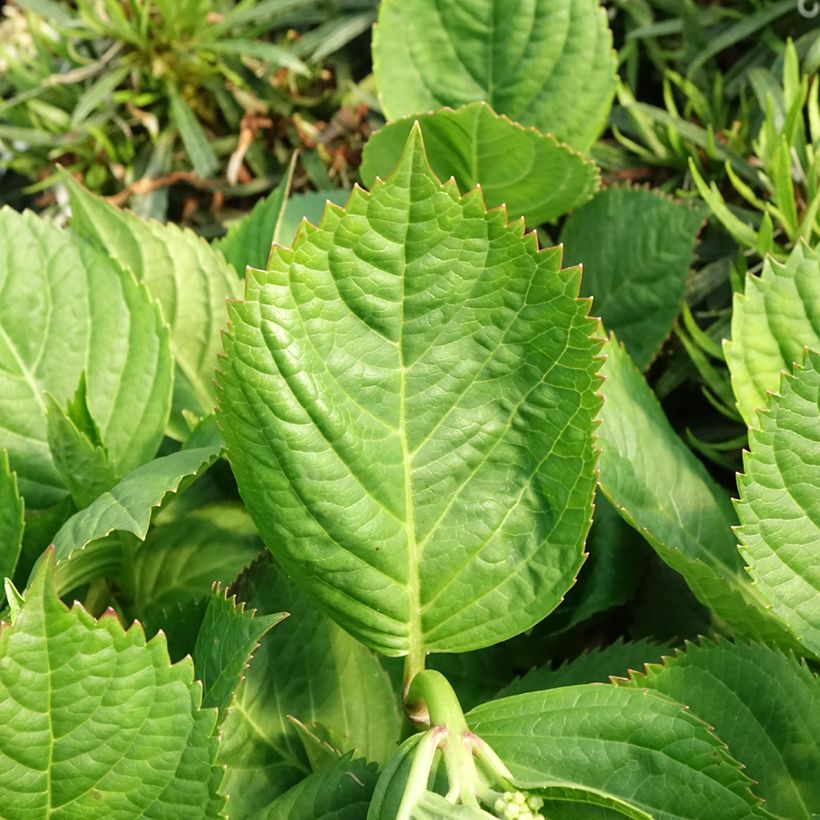

Plant habit
Flowering
Foliage
Botanical data
Hydrangea
macrophylla
Madame Plumecoq
Hydrangeaceae
Bigleaf Hydrangea, French Hydrangea
Cultivar or hybrid
Other Hydrangea Macrophylla
View all →Planting and care
Plant in spring or early autumn, preferably in a semi-shaded position, for example against an east-facing, or even north-facing wall. In very cold regions, it may be prudent to protect its stump with a thick mulch. Protect it from cold, drying winds. It does not require acidic soil, but appreciates deep, moist but well-drained, fairly fertile soil, possibly enriched with a good base fertiliser before planting. If planting near a wall and the soil is dry at its base, place the root ball at least 30 to 40cm (12 to 16in) away from it and incorporate a quantity of well-decomposed compost to better retain moisture in the soil. Hardy, it is not afraid to be planted in cold regions. Water regularly in hot weather to prevent the foliage from wilting during dry spells.
Planting period
Intended location
Care
This item has not been reviewed yet - be the first to leave a review about it.
Similar products
Haven't found what you were looking for?
Hardiness is the lowest winter temperature a plant can endure without suffering serious damage or even dying. However, hardiness is affected by location (a sheltered area, such as a patio), protection (winter cover) and soil type (hardiness is improved by well-drained soil).

Photo Sharing Terms & Conditions
In order to encourage gardeners to interact and share their experiences, Promesse de fleurs offers various media enabling content to be uploaded onto its Site - in particular via the ‘Photo sharing’ module.
The User agrees to refrain from:
- Posting any content that is illegal, prejudicial, insulting, racist, inciteful to hatred, revisionist, contrary to public decency, that infringes on privacy or on the privacy rights of third parties, in particular the publicity rights of persons and goods, intellectual property rights, or the right to privacy.
- Submitting content on behalf of a third party;
- Impersonate the identity of a third party and/or publish any personal information about a third party;
In general, the User undertakes to refrain from any unethical behaviour.
All Content (in particular text, comments, files, images, photos, videos, creative works, etc.), which may be subject to property or intellectual property rights, image or other private rights, shall remain the property of the User, subject to the limited rights granted by the terms of the licence granted by Promesse de fleurs as stated below. Users are at liberty to publish or not to publish such Content on the Site, notably via the ‘Photo Sharing’ facility, and accept that this Content shall be made public and freely accessible, notably on the Internet.
Users further acknowledge, undertake to have ,and guarantee that they hold all necessary rights and permissions to publish such material on the Site, in particular with regard to the legislation in force pertaining to any privacy, property, intellectual property, image, or contractual rights, or rights of any other nature. By publishing such Content on the Site, Users acknowledge accepting full liability as publishers of the Content within the meaning of the law, and grant Promesse de fleurs, free of charge, an inclusive, worldwide licence for the said Content for the entire duration of its publication, including all reproduction, representation, up/downloading, displaying, performing, transmission, and storage rights.
Users also grant permission for their name to be linked to the Content and accept that this link may not always be made available.
By engaging in posting material, Users consent to their Content becoming automatically accessible on the Internet, in particular on other sites and/or blogs and/or web pages of the Promesse de fleurs site, including in particular social pages and the Promesse de fleurs catalogue.
Users may secure the removal of entrusted content free of charge by issuing a simple request via our contact form.
The flowering period indicated on our website applies to countries and regions located in USDA zone 8 (France, the United Kingdom, Ireland, the Netherlands, etc.)
It will vary according to where you live:
- In zones 9 to 10 (Italy, Spain, Greece, etc.), flowering will occur about 2 to 4 weeks earlier.
- In zones 6 to 7 (Germany, Poland, Slovenia, and lower mountainous regions), flowering will be delayed by 2 to 3 weeks.
- In zone 5 (Central Europe, Scandinavia), blooming will be delayed by 3 to 5 weeks.
In temperate climates, pruning of spring-flowering shrubs (forsythia, spireas, etc.) should be done just after flowering.
Pruning of summer-flowering shrubs (Indian Lilac, Perovskia, etc.) can be done in winter or spring.
In cold regions as well as with frost-sensitive plants, avoid pruning too early when severe frosts may still occur.
The planting period indicated on our website applies to countries and regions located in USDA zone 8 (France, United Kingdom, Ireland, Netherlands).
It will vary according to where you live:
- In Mediterranean zones (Marseille, Madrid, Milan, etc.), autumn and winter are the best planting periods.
- In continental zones (Strasbourg, Munich, Vienna, etc.), delay planting by 2 to 3 weeks in spring and bring it forward by 2 to 4 weeks in autumn.
- In mountainous regions (the Alps, Pyrenees, Carpathians, etc.), it is best to plant in late spring (May-June) or late summer (August-September).
The harvesting period indicated on our website applies to countries and regions in USDA zone 8 (France, England, Ireland, the Netherlands).
In colder areas (Scandinavia, Poland, Austria...) fruit and vegetable harvests are likely to be delayed by 3-4 weeks.
In warmer areas (Italy, Spain, Greece, etc.), harvesting will probably take place earlier, depending on weather conditions.
The sowing periods indicated on our website apply to countries and regions within USDA Zone 8 (France, UK, Ireland, Netherlands).
In colder areas (Scandinavia, Poland, Austria...), delay any outdoor sowing by 3-4 weeks, or sow under glass.
In warmer climes (Italy, Spain, Greece, etc.), bring outdoor sowing forward by a few weeks.






























